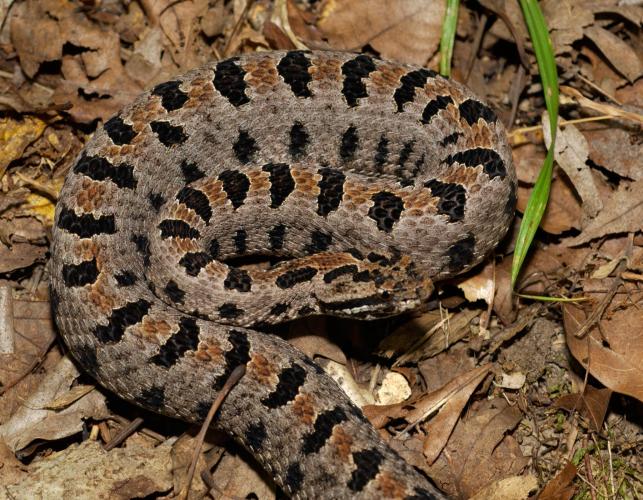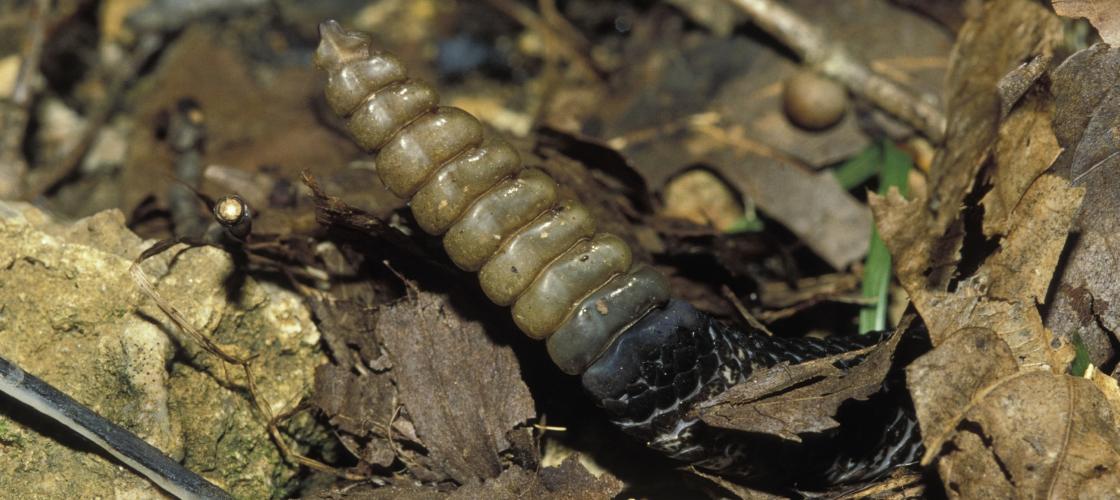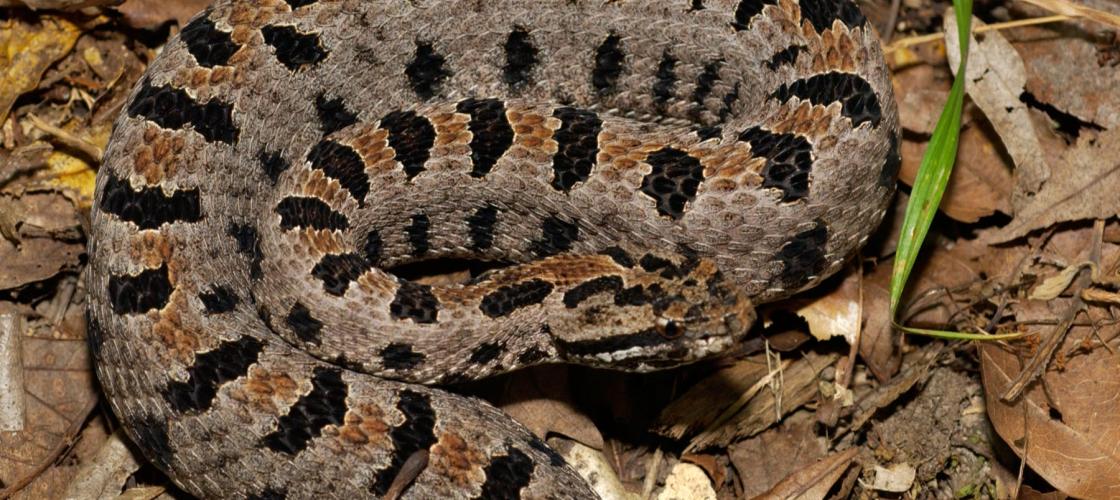It’s a startling sound that can stop you in your tracks. There’s no mistaking the rattlesnake’s rattle, but how it makes its scary sound has been misunderstood.
Some people think a rattlesnake’s rattle is full of pebbles, like beads in a baby’s rattle. Actually, the rattle is made of special hollow scales on the tip of the snake’s tail. These scales are loosely connected. When the rattlesnake vibrates its tail, the scales rapidly strike each other, causing a buzzing sound.
A rattlesnake is born with a single button on its tail. Each time the snake sheds its skin, a new segment is added at the base of the rattle. MDC Herpetologist Jeff Briggler notes that, "The more a snake is growing, the faster it sheds. Younger snakes shed more than older snakes and can shed on average, three to four times a year in warmer months." As the rattle grows longer, the end segments can weaken and break off. Sometimes insects eat holes into the rattle, further weakening it and causing a loss of segments. This pattern of growth makes it impossible to determine the snake’s age by counting the number of segments in its rattle.
The buzz of the rattle is designed to draw attention. Rattlesnakes evolved on the Great Plains where hooved animals, like bison and elk, roamed. The sharp buzz of the rattle protected rattlesnakes from trampling by alerting these animals. By scaring off predators and large, blundering intruders, rattlesnakes conserve their energy and venom for catching food.
All Rattled Up
Rattlesnakes are considered the most evolutionarily advanced group of snakes. The western pygmy rattlesnake is commonly found along the Missouri-Arkansas border and in the eastern Missouri Ozarks and the St. Francois Mountains. Here’s a little more about this small “ground rattler”
- The colorful western pygmy rattlesnake has a thin tail and tiny rattle. Like other venomous snakes, it has “pits” on the sides of its head, and the pupils are diamond shaped in daylight.
- Its rattle sound is only a faint buzz like that of a grasshopper, and can only be heard about a yard away.
- Its diet includes a variety of small lizards, small snakes, mice, and occasionally small frogs and insects.
- In late spring and early summer, it basks in rocky open areas, near brushpiles, or along roadsides near woodlands and glades.
- Although its bite is not fatal, a bite victim should seek immediate medical attention. The western pygmy rattlesnake should be respected and left alone.
To learn more, visit MDC’s Field Guide.




Recent Posts
























